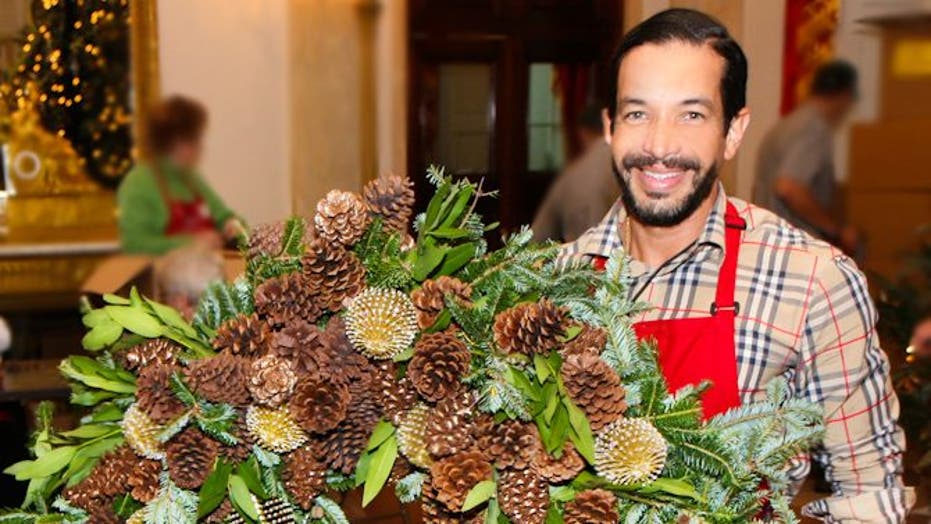Antonio Cabrera can now count himself as a small part of U.S. history. The Venezuelan-born floral designer and event planner was given the job of decorating one of the most important rooms in the world for Christmas: the East Room of the White House.
Cabrera is the first Latino to be given the honor. His task: gussying it up for the holidays.
It took months of painstaking planning and long days of assemblage to pull it off. Every detail, every step, had to meet the approval of first lady Michelle Obama herself.
Not quite 80 by 37-foot, the East Room is traditionally used for dances, receptions, concerts, weddings, award presentations, press conferences and bill-signing ceremonies. Presidents are commonly inaugurated in private here before proceeding to the Capitol for their official public inauguration. It's also the room where presidents, vice presidents and other dignitaries are sometimes laid in honor prior to their funerals.
Cabrera was tasked with decorating the room, as well as four 15- to 18-foot Christmas trees, four 30-foot tall windows and four huge mirrors. He says the first family has very traditional style and it was important that his design relate to décor of the period — in the vein of the famous Gilbert Steward portrait of George Washington, which has hung in the East Room since 1800. Cabrera made the choice of keeping his decorations simple, sophisticated and classic.
In the weeks it took for Cabrera and the team of volunteers to transform the White House into Christmas wonderfulness, he says he was delighted when at their first lunch, black beans and rice were offered as an option.
"This is a new president, of course now in his second term, and he has the wonderful mentality of openness. They eat food from around the world. I was speaking in Spanish with many of the volunteers and coordinators," he said. "There's a feeling of inclusion in this White House. I love it. And I'm so proud as a Latino to be serving my country —even in this small way."
Cabrera says it wasn't until he sat down for lunch in the White House cafeteria that the reality of the magnitude of this job sank in.
"I was so grateful to have this opportunity," Cabrera said.
Cabrera was born in Caracas, Venezuela, but says his age is a "professional secret." He studied art, sculpture and architecture at the University of Art and Architecture in Caracas.
He had success with his artwork, but in 1992 he decided to branch out in his career and move to a larger and more cosmopolitan city. Miami felt like the right spot.
He found almost immediate success in the world of visual display, working in showrooms in posh neighborhoods in the Miami area, like Bal Harbour and Coral Gables. He even worked in people's homes, designing events and styling for photo shoots.
Cabrera gained a reputation in South Florida with the rich and famous. And he became the go-to decorator of choice for Miami's elite, including New York Yankees great Alex Rodriguez.
Miami brims with decorators and floral designers, but he was able to set himself apart.
"I assemble pieces in a unique way. I use lots of color and I try to make sure that everything people see is like a small work of art," he said. "Everything should look like art. But also, people see me as a human being and I see them the same way. It's part of my talent, I'm able to see the whole person and design something they'll love."
In 2011, he worked in the White House during Christmas as an assistant to another designer —and he was only in charge of the Grand Foyer. But it was Cabrera's goal to be in charge of a whole room himself.
But to do that he would have to sell himself a little. He wrote a letter to Michelle Obama, sent in his portfolio for review and told her his personal story of immigrating to the U.S. from Venezuela.
It worked, and when he returned to the White House this year things were quite different than 12 months before. Mrs. Obama recognized him, acknowledged him. And he was given the honor of all honors and the room of all rooms to decorate — the East Room.
"I really want to make Latinos proud," he said. "And show them that if you believe, anything is possible."

